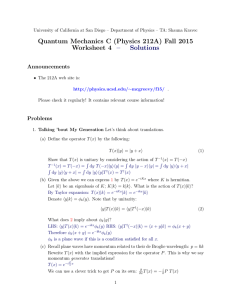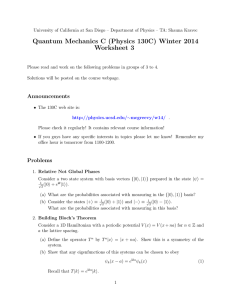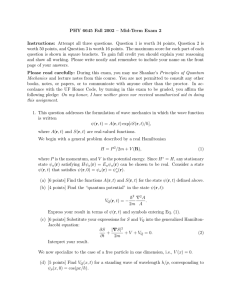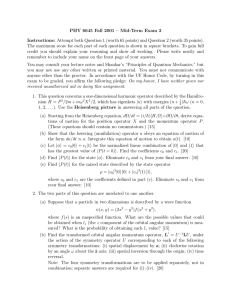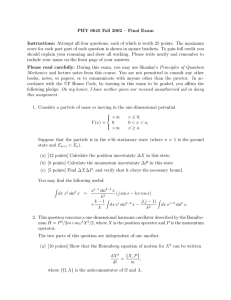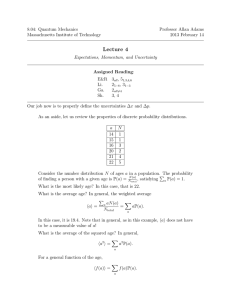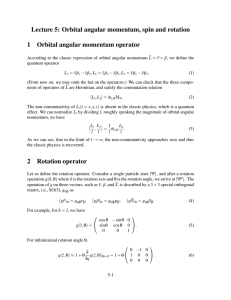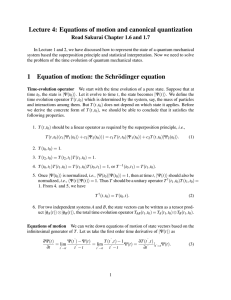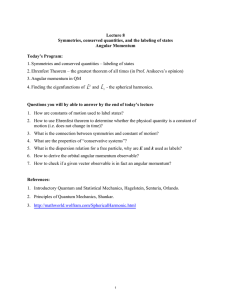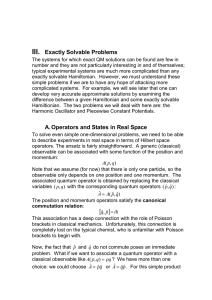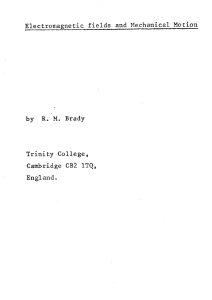Quantum Mechanics C (Physics 212A) Fall 2015 Worksheet 4 Announcements
advertisement
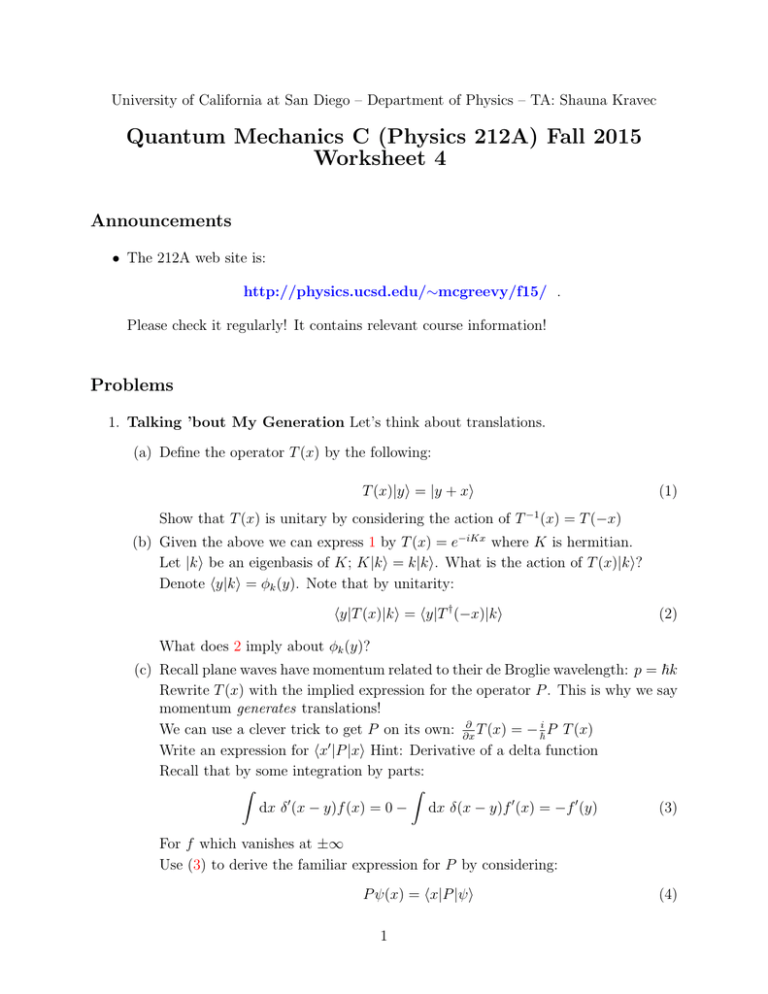
University of California at San Diego – Department of Physics – TA: Shauna Kravec Quantum Mechanics C (Physics 212A) Fall 2015 Worksheet 4 Announcements • The 212A web site is: http://physics.ucsd.edu/∼mcgreevy/f15/ . Please check it regularly! It contains relevant course information! Problems 1. Talking ’bout My Generation Let’s think about translations. (a) Define the operator T (x) by the following: T (x)|yi = |y + xi (1) Show that T (x) is unitary by considering the action of T −1 (x) = T (−x) (b) Given the above we can express 1 by T (x) = e−iKx where K is hermitian. Let |ki be an eigenbasis of K; K|ki = k|ki. What is the action of T (x)|ki? Denote hy|ki = φk (y). Note that by unitarity: hy|T (x)|ki = hy|T † (−x)|ki (2) What does 2 imply about φk (y)? (c) Recall plane waves have momentum related to their de Broglie wavelength: p = ~k Rewrite T (x) with the implied expression for the operator P . This is why we say momentum generates translations! ∂ T (x) = − ~i P T (x) We can use a clever trick to get P on its own: ∂x Write an expression for hx0 |P |xi Hint: Derivative of a delta function Recall that by some integration by parts: Z Z 0 dx δ (x − y)f (x) = 0 − dx δ(x − y)f 0 (x) = −f 0 (y) (3) For f which vanishes at ±∞ Use (3) to derive the familiar expression for P by considering: P ψ(x) = hx|P |ψi 1 (4) 2. Building Bloch’s Theorem Consider a 1D Hamiltonian with a periodic potential V (x) = V (x + na) for n ∈ Z and a the lattice spacing. (a) Define the operator T n by T n |xi = |x + nai. Show this is a symmetry. (b) Assuming H has no shared degeneracy with T , show that any eigenfunctions of this system can be chosen to obey ψk (x − a) = e−ika ψk (x) (5) Recall that T |ki = e−ika |ki and hx|ki ≡ ψk (x). (c) Infer from (5) that one can then write ψk (x) = eikx uk (x) where uk (x) = uk (x + a) Note that k is different from our usual momentum. It’s a crystal momentum! (d) Show explicitly that for P = −i∂x that P ψk (x) 6= kψk (x) (e) Show that −π a ≤ k ≤ πa . What is k + 2π ? a 3. A Theorem of Kramer Most symmetries are unitary. Some are anti -unitary. Time reversal is one of the latter. Denote this operator with T . Something one might expect classically is that T xT −1 = x but T pT −1 = −p. It makes things run backwards. A similar story is true for angular and spin momentum. T ST −1 = −S (a) Consider the action of T on a spin- 21 : T |0i where Sz |0i = 12 |0i. Show that T = −iY K is a suitable representation for T where K implements 0 −i complex conjugation 1 and Y is the Pauli matrix . i 0 What is T 2 in this case? (b) Consider a system whose Hamiltonian H is time reversal symmetric. Show that if |ψi is an eigenstate then T |ψi is as well. Does this change the energy of the state? (c) Imagine this is a spin- 21 system such that |ψi is an eigenstate of Sz as well. How are |ψi and T |ψi related? Can they be the same? 1 This is what makes it anti-unitary. 2

